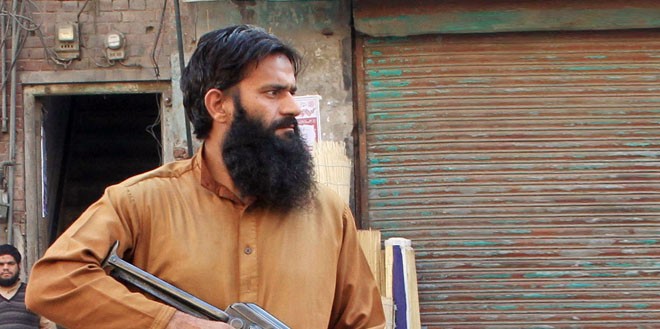

The swiftest and the most efficacious way of dealing with ‘difference’ is to exterminate the very source of it. This is what happened in the recent attempt on Raza Rumi’s life. Our intellectual friend Adeel Hussain designates such an act as a form of ‘negotiation’, the only distinctive feature of which is that one party asserts itself through the barrel of a gun and thus the process of ‘negotiation’ comes to an expeditious conclusion.
That way it is like the system of justice that many so devoutly espouse -- where the ‘speed’ is of essence rather than ‘justice’. Anything that lingers a bit becomes an irritant; thus is liable to be concluded forthwith whether it’s a property dispute or political ‘negotiation’. The barrel of the gun is the arbiter and, sadly, it is gaining appeal and approval by many among our own selves.
Adeel’s assertion is primarily derived from the powerful but somewhat convoluted concepts of Walter Benjamin and Jurgan Habermas. The latter thinks that in a course of a communicative action, the ‘speech act’ fails to put across the truth claims that one holds; therefore it resorts to violence. Thus the inadequacy of the language is underscored and violence becomes the instrument of ‘negotiation’. Benjamin says the ability to non-violent behaviour in human beings rests entirely on the capacity to communicate. It is through language that conflicts can be resolved otherwise violence will rule the roost.
One can infer from that formulation that those resorting to violence have this incapacity to communicate; therefore they tend to negotiate through the barrel of the gun. In that negotiation between a toting gun and a wagging tongue, the former holds sway over the latter in a quite convincing manner. Many wagging tongues have in this way been silenced, along with their respective beholders.
The usual loci for that form of ‘negotiation’ are the urban centres in mainland Pakistan and not Waziristan or any remote corner of Khyber Pakhtunkhwa. The urban centres, particularly in the Punjab, are in a dire need of analytical gaze from the government agencies and also of the academia to make sense of that trend. Karachi and Peshawar have had a good taste of such unilateral action between unequals, and now Lahore is steadily drifting to such acquiescence to gun-toting adventurism in the name of religion.
Many will of course argue that the Punjab is the place where extremism and its operatives are being hatched. Unfortunately, neither an analysis of the situation nor any prognosis on dealing with violence in the name of religion have so far been devised by the government. One may suggest that all the major universities should have Peace Studies Departments. Similarly, with the departments of Sociology in utter neglect and the absence of any rigorous research in our institutions, the general impression of the Pakistanis about their own society and state is strongly inflected through the prism of foreign academia.
Mathew Nelson, social anthropologist at School of Oriental and African Studies, reveals that so far 40 studies have been carried out on Jhang district. Thus, to know the social and religious trends of that district, one cannot do without consulting Vali Nasr or Mariam Abou Zhab. Instead of fighting over the discrepant personality traits of our founding fathers, studying the current problems in their historical and social context will be a welcome move. That is the first step towards the resolution of our problems, which has not been taken yet.
Professing strongly that the Punjab is the epicentre of religious extremism which expressed itself in such a ruthless manner in the attack on Raza Rumi, I will assert that alongside Lahore, Faisalabad and Gujranwala are powder kegs, ready to explode any moment. These cities are riddled with seminaries; the most influential among them being Deobandi which were mostly relocated to that city on the eve of the partition. Besides, Sahiwal, Faisalabad and Gujranwala had the optimum number of migrant population. Given the sharp religious zeal among some of them, they are a ready constituency for sectarian and extremist religious outfits.
Scholars of sectarianism know that Sipah-e-Sahaba Pakistan was founded in Jhang city (in September 1985), which was avidly supported by the migrants living in Jhang. More pertinently, Faisalabad’s munificent financial and moral support was vital in anchoring that anti-Shia outfit. Thus, violence became an effective means of communication by Sipah-e-Sahaba.
South Punjab, a terrain historically known for its rich Sufi ethos, has had a changed demographical character which by extension led to the change in its denominational profile. Ayesha Siddiqua has written quite extensively on what is unfolding in and around Bahawalpur which came under media spotlight as an abode of Maulana Massud Azhar, a known militant of Deobandi persuasion and his credentials as Mujahid-i-Kashmir are firmly established. The belt running from Okara to Rahimyar Khan is extremely perilous for the volte face which has taken place during the last three decades.
Thus the culture spawned over these decades in the Punjab has made violence as the hallmark of our way of communication. One feels absolutely baffled as to how and when will the communicative action be performed only through language and not through guns and artillery.